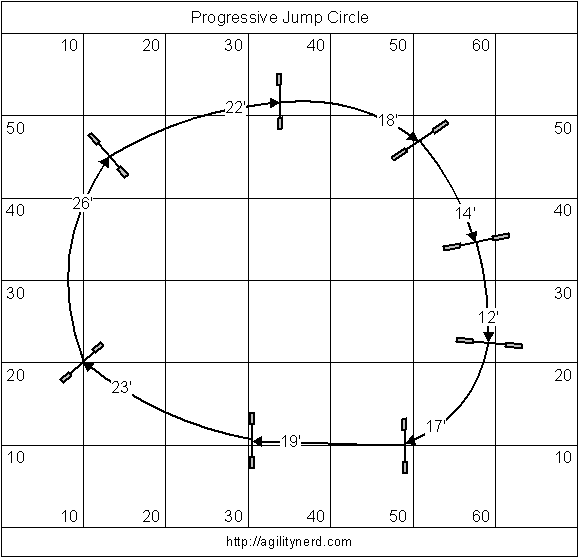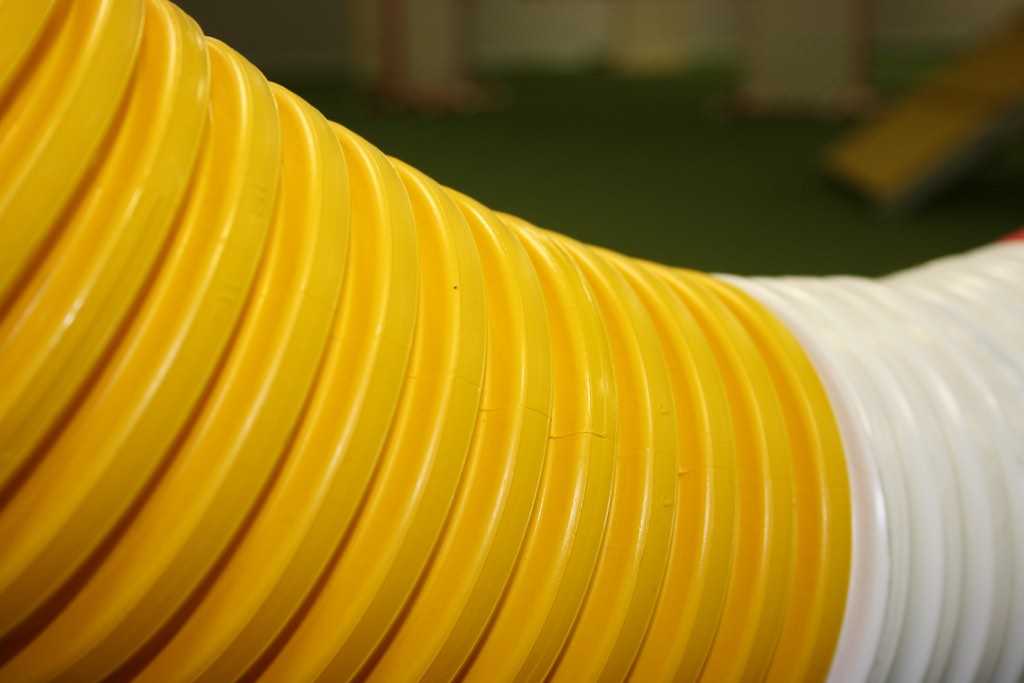Progressive Jump Circle
10 May 2015
Flyer has had problems adjusting his stride/commitment point on long jumping sequences and will occasionally drop a jump bar. On difficult courses there often aren't more than two to three jumps without a sharp turn or Back Side Handling the Quad Back Side - Patrick Bucher Course/VideoThe Connection Between Threadles and Back SidesBack Side/Back Side JumpBack Side of Jump Handling Combinations - Video so those courses aren't typically a problem for him. But big flowing Novice-style jumpers courses can be a problem when he ends up too deep and tries to "pop" over a jump; if he can't do it he'll knock the bar.There are many ways trainers work on this problem. With Meeker I used Suzanne Clothier’s Natural Jumping Method and some people like Susan Salo’s or Chris Zinc’s methods. I set up basic Jump Grids, aka Jump Chutes, at various spacings and over a few weeks Flyer showed improvement. The next steps are to work curved grids and curved grids with varying distances between jumps.
If you have the space you can combine the last two ideas into a single setup/course:
Progressive Jump Circle

The key to the layout is the spacing between the jumps varies gradually from around 26’ down to about 10’. You want the dog to learn to move from full extension into more and more collection and then back out to full extension.
Example Progressive Jump Circle

You can start the dog at any point in the circle, through at least a full circle and you want to run the dog in both directions. It doesn’t have to be a circle; in fact an oval lets you work on straight jumping sequences and then jumping into turns of various jump spacings.
Don’t forget to work with varying amount of handler motion as your dog moves through the sequence. That is, you want the dog to follow your cues as he moves around the circle. I don’t want Flyer to just learn to take a line of jumps in front of him if I’m standing stopped behind him and not otherwise cuing him to take them. So as part of these drills I will also cue him to wrap a jump or not take a jump; he still has to work with me.
Conversely I don’t want my cues to cause him to drop bars; I want him to have the responsibility for keeping the bars up; even if I give bad/late cues. For example, Flyer would start to rush his stride and drop bars if I pushed my pace around the circle.
When your dog is successful it is also important to vary when/where the rewards occurs. You should also decide if you are using a No Reward Marker when your dog drops a bar - or if just stopping is sufficient to let your dog know that they won’t be getting a reward. Lastly, you could consider using Rhonda Carter’s Bar Bells.
So here a jumping practice “cheat sheet” with the aspects you’ll want to vary:
- Distance between jumps:
- All the same distance
- Extended stride(s)
- Single stride
- Bounce
- Varying distance
- Slight difference between
- Significant differences
- All the same distance
- Types of jumps:
- Number of bars on each jump
- Color/pattern of jump bar
- Wing/wingless
- Spread jumps (double/triple)
- Long/broad jump
- Panel/viaduct jump
- Approach to jumps:
- Straight on
- Gradual turns
- Wraps
- Handler cues:
- Motion (acceleration, deceleration)
- Location
- Ahead of dog
- Behind dog
- Verbal cues ("Go", "Jump", etc.)
I’ve certainly found the Progressive Jump Circle to be a useful tool and hope you’ll consider it in your jumping training.
You might be interested in my article on the Progresive Jump Spiral too!
If you enjoyed this article won't you please:  Thanks!
Thanks!
